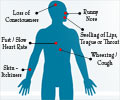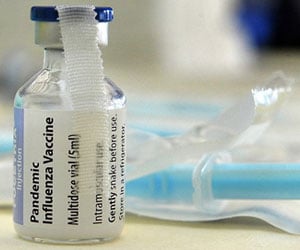Researchers at the Johns Hopkins Asthma and Allergy Center have found that activating a protein called Siglec-8, which is present on some immune cells, may be the key to stopping allergic reactions that lead to asthma.
The research team, led by Bruce Bochner director of the Division of Allergy and Clinical Immunology at the Johns Hopkins University School of Medicine had earlier pointed out that Siglec-8, located on the surfaces of immune cells like eosinophils, basophils and mast cells, may stop their usual mechanism of ejecting substances causing allergic reactions.While eosinophils fight against foreign invaders, like parasites, basophils and mast cells store and release substances like histamine, prostaglandins and cytokines, which signal other immune system cells to get in action.
Normally these cells keep the body to stay healthy and infection-free, however, in case of allergic reactions, the cells show an intense response that proves to be rather harmful than useful for the body.
It was found in previous studies that when Siglec-8 present on the surface of eosinophils, was activated, it resulted in the death of these cells. Hoping for a similar response, the scientists tested their theory in a new study on human mast cells and mast-cell-containing tissues.
The team used antibodies to activate Siglec-8 on the mast cells grown in a lab.
“We were surprised to see that these cells just sat there happily in their petri dishes and lived on,” said Bochner,
Advertisement
In order to find out the other processes inhibited by Siglec-8, the scientists again activated the protein in mast cells using antibodies. Later they tried to ignite an allergic response from these cells.
Advertisement
However, it was found that almost half of the usual amount of these substances was released in the cells having activated Siglec-8.
Later, the scientists extended their experiment from cells to tissues and used antibodies to activate mast cells’ Siglec-8 in small pieces of human lung saved from autopsies.
The cells were then triggered to release their payloads, which disturbed the usual act of airways to constrict the contractions, which were about 25 percent weaker as compared to lung tissue where the mast cells’ Siglec-8 wasn’t activated.
However it is still not clear how Siglec-8 inhibits mast cells from releasing their immune-triggering chemicals.
According to follow-up experiments, activating the protein keeps calcium from moving efficiently into the cells. This calcium signal is required by mast cells to release their contents.
According to Bochner, these results would eventually be used to develop a drug with this same effect. Such a drug would have the dual effect of blocking or reducing allergic reactions by killing eosinophils and preventing mast cells from releasing their substances.
“Both of these effects could make allergic diseases and asthma less severe. It’s an intriguing approach because there are no drugs that specifically target both these cell types,” he said.
The research is published in the latest issue of the Journal of Allergy and Clinical Immunology.
Source-ANI
LIN/M











